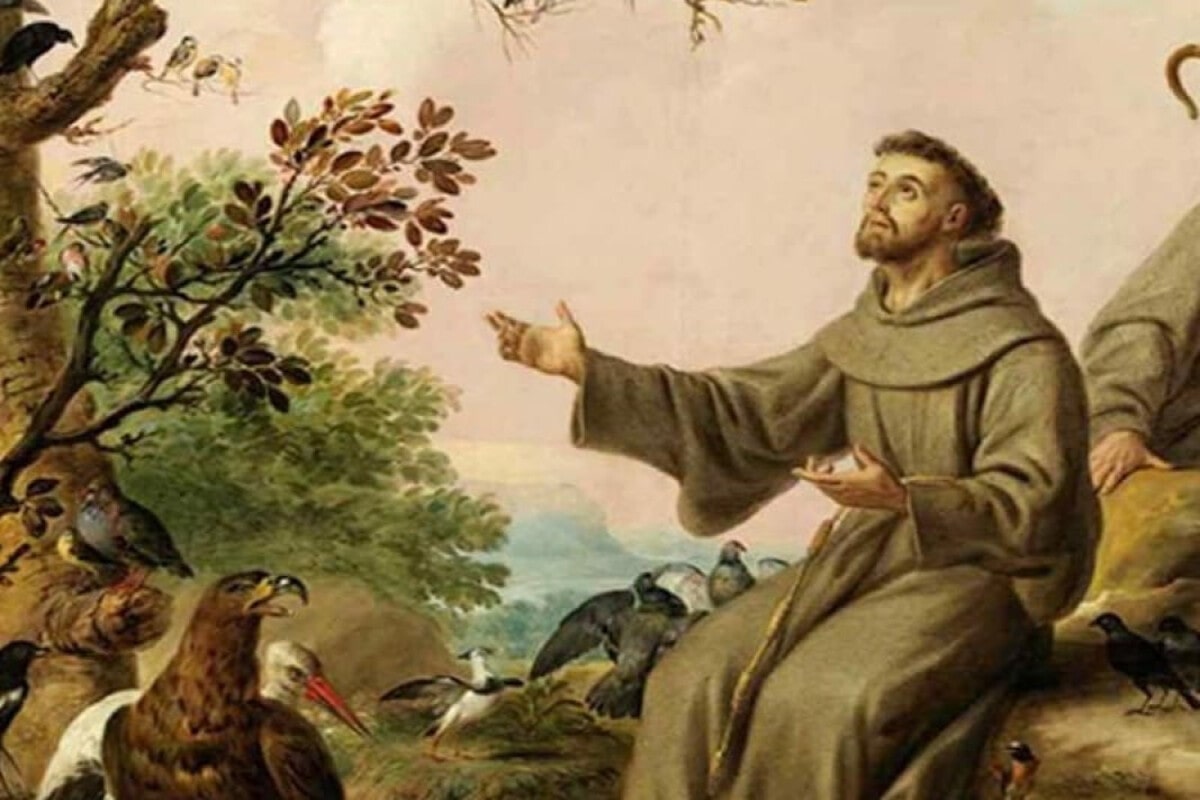The life of Francis of Assisi is a remarkable story of transformation, spirituality, and unconditional love for all living beings. Born into a wealthy Italian family, he chose to abandon material comforts and dedicate himself to poverty and service to God. He is now seen as a symbol of humility, peace, and compassion. Francis founded the Franciscan Order, and his influence extends far beyond the Catholic Church. Here are some interesting and amazing facts about this extraordinary saint that you may not know.
- Francis of Assisi was born in 1181 or 1182 as Giovanni di Pietro di Bernardone, the son of a prosperous merchant. His father later called him Francesco because of his fondness for France. As a youth, Francis led a carefree and luxurious life. He loved fashion, parties, and the company of his peers.
- As a young man, Francis joined the war between Assisi and Perugia and was taken prisoner. He spent a year in captivity, during which time he became seriously ill and began to reflect on the meaning of life. This experience marked the beginning of his spiritual transformation. He gradually abandoned his former lifestyle and turned toward God.
- One day, while praying in a dilapidated church, he heard a voice telling him to rebuild the house of God. Francis took this literally and began repairing small churches with his own hands. Later, he realized the message referred to the spiritual renewal of the Church as a whole. From that point on, he devoted his life to this mission.
- To finance the repairs, he sold expensive cloth from his father’s shop. This enraged his father, who brought him before the bishop. Francis publicly renounced his inheritance and stripped off his clothes, returning them to his father. He was taken in by the Church and began a life of total poverty.
- In 1209, Francis traveled to Rome and received Pope Innocent III’s blessing to found a religious order. Thus, the Order of Friars Minor, later known as the Franciscans, was born. Its members took vows of poverty, obedience, and humility. The movement spread rapidly throughout Europe.
- Francis saw all living creatures as his brothers and sisters. He preached to birds and was said to communicate with wild animals, which became part of his legend. One tale tells of a wolf that terrorized the town of Gubbio until Francis tamed it through peaceful words. People regarded him as a man of great mercy toward all creation.
- In 1219, Francis traveled to Egypt during the Fifth Crusade and met with Sultan Al-Kamil. Their conversation was respectful and peaceful, a rare example of interfaith dialogue in the Middle Ages. Francis aimed not to convert through force but through example and kindness. This encounter left a lasting impression on both Christian and Muslim observers.
- In 1223, in the town of Greccio, Francis created the first live nativity scene in history. He used real animals and natural settings to depict the birth of Jesus. This helped people connect emotionally with the mystery of the Incarnation. The tradition spread around the world and continues to this day.
- Toward the end of his life, Francis suffered from numerous illnesses and lost his vision. In 1224, while praying on Mount La Verna, he had a mystical experience and received the stigmata. These were visible wounds resembling those of Christ. He was the first known saint in history to bear the marks of the Passion.
- Francis died on October 3, 1226, in the small chapel of the Portiuncula near Assisi. His body was buried in a basilica built in his honor. He was canonized just two years later, in 1228, by Pope Gregory IX. His feast day is celebrated on October 4 and he is now the patron saint of animals and ecology.
- Francis was the author of one of the earliest literary works in the Italian language, the “Canticle of the Sun.” The poem praises the sun, moon, water, fire, and earth as human siblings. It reflects his deep sense of unity with nature. The canticle is still read today in religious and environmental ceremonies.
- In 1979, Pope John Paul II declared Francis the patron saint of ecologists. His name and image are used in many campaigns to protect the environment. His message of respect for all life forms continues to inspire. He gave ecology a moral and spiritual dimension.
- Francis was closely associated with Saint Clare, with whom he founded the Order of Poor Ladies, later called the Poor Clares. The sisters embraced poverty and a life of prayer and simplicity. The order still exists today in many countries. It is a testament to the enduring legacy of Francis’s vision.
- In 2013, the newly elected Pope took the name Francis for the first time in history. This act paid tribute to the saint from Assisi and his values. The Pope emphasized a Church that serves the poor and marginalized. The choice of name sent a strong message of humility and renewal.
These interesting facts show how profoundly inspiring the life of Francis of Assisi was. His message of simplicity, peace, and care for the natural world still resonates across cultures and religions. He remains a model of spiritual courage and compassion. His life proves that kindness and humility have the power to transform the world.





